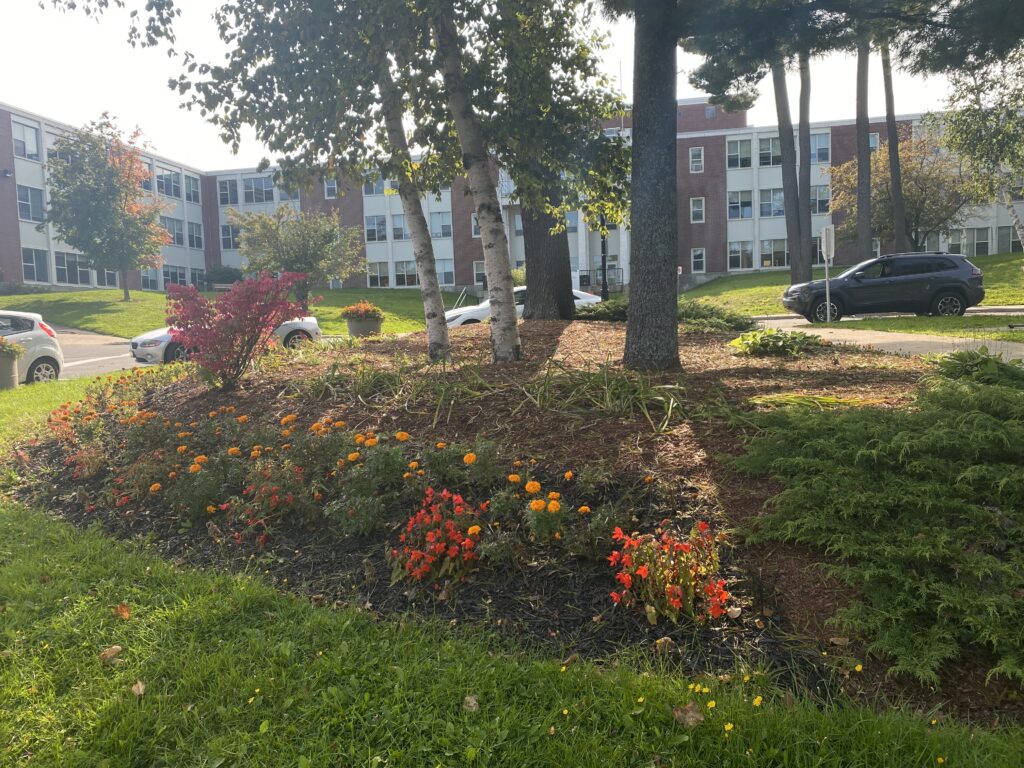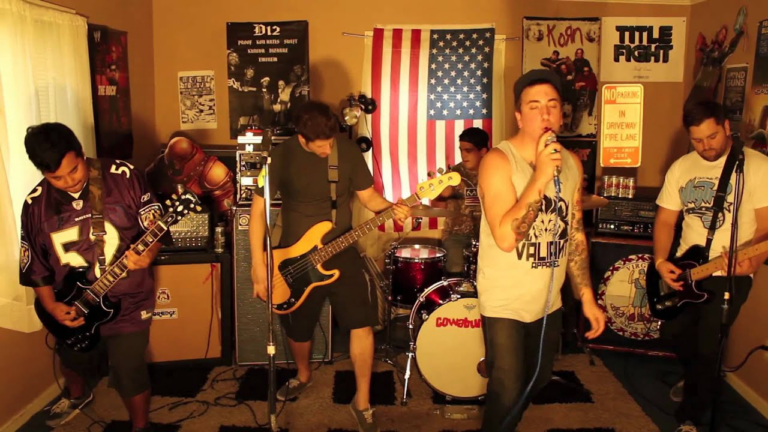The summer may be over, but it is always time to appreciate the flowerbeds and greenery on the UNB campus.
The Brunswickan spoke to Brady Fredericks, who currently serves as a gardener on campus. While the total quantity of the beds is uncertain, Fredericks estimates that there may be around 120 of them spread across university grounds.
He said: “Mostly [the flowerbeds are] in front of buildings. Entryways, and all the gates to campus. It all depends.”
“There are a lot of places that they are put in just because [they] didn’t know what to do with the space.”
“But most of [the flowerbeds] are put in areas that are high visibility—mostly entrances,” he concluded.
Fredericks explained that a myriad of flowers are planted on campus. Right now, with the holiday coming up, the flowerbeds are tending to the theme of the National Day for Truth and Reconciliation.
“The orange is the theme here … we are planning orange marigolds, a lot of orange calla lilies.”
Students going up to the Marshall D’Avary Hall, which houses the M’ikwmaq-Wolatosqey Centre, may notice that the garden in front of it is filled with orange flowers.
Fredericks claims that the area in front of D’Avary Hall makes up for his favorite flowerbed:
“The aesthetics is round, it is raised, and it has some natural trees. It is highly playable.”
These flowers, Fredericks states, do not have much of an impact on the ecosystem.
“The effect is more for aesthetics, for people and the environment it makes.”
Fredericks remarked that green spaces, in general, are increasingly sparse on campus.
“They’re starting to run out of them … The SUB woods is a main green space left, and, like, the SUB area here.”
Although Fredericks noted that the University plans on adding some more greenery to the campus.
“You know … when they take down the Beaverbrook Gym, that area is supposed to be slated and turned into green space.”
Holly Carter, a fourth year Environment and Natural Resources student majoring in Wildlife Conservation, spoke to The Brunswickan about on-campus green spaces.
For her, green spaces are important for two reasons.
“[There is an] aesthetic value or spiritual value that humans have … being around nature and … that is good for mental health and clarity… We have a biological need to be around nature, it is a very natural thing to want to do.”
She also said:
“From an ecological perspective, you know …we’re working in a city that is like … very fragmented here … So it’s nice to have blocks of nature, you know, to help animals pass through the city.”
Carter suggests that more native species of flowers could be planted on-campus, since most of the flowers are not native to New Brunswick.
“Pollinator gardens would be a smart choice. That way we can help out our pollinator community especially considering a large majority of UNB is just grass and that’s not very good for the pollinators and we cut it pretty short.”
“So at least in the garden beds, it should be using either native species, pollinator gardens, or edible vegetation,” she suggested.




